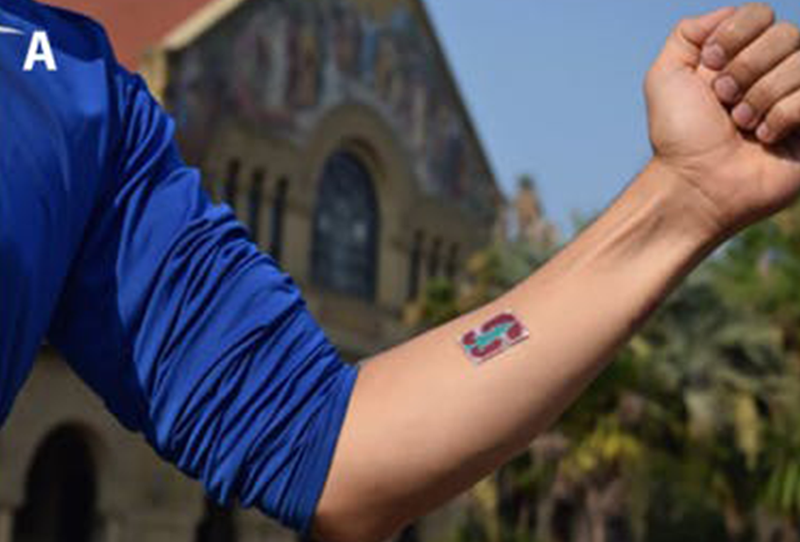Traditional wearable devices rely on your pulse and heart rate to measure your fitness level. But, Stanford scientists are taking a different approach to measure fitness; they’re taking a closer look at sweat.
Related UT-Dallas Researchers Develop Wearable Sensor That Monitors Sweat for Alcohol And Glucose Levels
Cortisol, better known as the stress hormone, is useful for tracking your athletic performance and even identifying signs of disease, since it reflects how well your adrenal or pituitary glands are working. However, it comes with a minor problem; measuring your cortisol can take several days, by which point the information is no longer relevant, reports EndGadget.
Stanford researchers found a better option. The wearable, flexible sweat sensor they developed can track cortisol levels that delivers results in seconds – that is, while it’s at its most useful. It sounds straightforward, but the team had to overcome a major obstacle common to most biological sensors.
“We are particularly interested in sweat sensing, because it offers noninvasive and continuous monitoring of various biomarkers for a range of physiological conditions,” said Onur Parlak, a post-doctoral scholar in the Salleo lab and lead author of the paper. “This offers a novel approach for the early detection of various diseases and evaluation of sports performance.”
As our lives are becoming more stressful every day, it’s becoming increasingly important to find a solution this problem.
“The biggest initial challenge was to find a way to sense a neutral molecule (cortisol) with an electrochemical sensor designed to sense charged molecules/atoms,” explains Alberto Salleo, Ph.D., study co-author and Stanford materials science professor, to Inverse. “Onur came up with a sensing layer that blocks ions if cortisol is present.”
The problem with the biosensor Parlak was working on was that the sensors detect a molecule’s positive or negative charge – and cortisol has no charge.
Parlak, however found a way to overcome this problem. He built his stretchy, rectangular sensor around a membrane that specifically binds only to cortisol. While stuck to the skin, it sucks in sweat passively through holes in the bottom of the patch. The sweat then accumulates in a reservoir, which is topped by the cortisol-sensitive membrane.
Related This Wearable Device Wants You to Sweat So that It Can Monitor Your Health
Sodium or potassium, also found in sweat, are charged ions that pass through the membrane unless they are blocked by cortisol. The sensor detects these backed up charged ions and not the cortisol itself. Then it has a waterproof layer on top which protects the patch from contamination.
The sensor seems to work as planned so far. But the researchers are working on it to make it more reliable and precise. The prototype can be used multiple times as long as it’s not saturated with sweat. The researchers may, in the future, try their new sensor on saliva, which would avoid patients needing to sweat.












